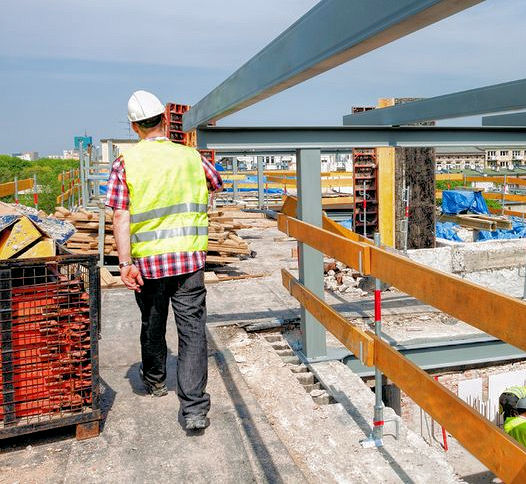Guardrail Systems
A guardrail system consists of a top rail, midrail, and intermediate vertical member.
Guardrail systems can also be combined with toeboards that prevent materials from rolling off the walking/working surface.
Guardrail systems must be free of anything that might cut a worker or snag a worker's clothing. Top rails and midrails must be at least 1/4-inch thick to reduce the risk of hand lacerations; steel or plastic banding cannot be used for top rails or midrails. Other requirements for guardrails:
- Wire rope used for a top rail must be marked at least every 6 feet with high-visibility material.
- The top rail of a guardrail must be 42 plus or minus 3 inches above the walking/working surface. The top-edge height can exceed 45 inches if the system meets all other performance criteria.
- Midrails must be installed midway between the top rail and the walking/working surface unless there is an existing wall or parapet at least 21 inches high.
- Screens and mesh are required when material could fall between the top rail and midrail or between the midrail and the walking/working surface.
- Intermediate vertical members, when used instead of midrails between posts, must be no more than 19 inches apart.
- A guardrail system must be capable of withstanding a 200-pound force applied within 2 inches of its top edge in any outward or downward direction.
- Midrails, screens, and intermediate structural members must withstand at least 150 pounds applied in any downward or outward direction.
Knowledge Check Choose the best answer for the question.
6-2. The top rail or a guardrail must be _____ inches plus or minus _____ inches above the walking/working surface.
You forgot to answer the question!

